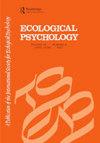被可视性包围时的视觉探索:头部运动的频率可以预测反应速度
IF 1.7
3区 心理学
Q3 PSYCHOLOGY, EXPERIMENTAL
引用次数: 32
摘要
当参与者被行动机会包围时,我们对支持探索的行动及其与后续行动的关系知之甚少。在这里,支持视觉探索的动作与在包围式足球(足球)传球任务中的表现有关。用惯性测量装置对有经验的足球运动员的头部运动进行了量化。在模拟足球场景中,参与者完成了一个接球-传球任务,要求他们在获得模拟控球权后尽快向周围四个目标中的一个指示传球方向。记录了控球前后的头部运动频率和传球反应时间。我们控制探索时间(获得模拟控球前的时间)为1、2或3秒。探索时间显著影响头部运动的频率,并且在获得球权之前较高的头部旋转频率导致更快的传球反应。探索性行为影响随后的执行性行为。也就是说,更高频率的头部运动导致更快的决策。讨论了对研究和实践的启示。本文章由计算机程序翻译,如有差异,请以英文原文为准。
Visual Exploration When Surrounded by Affordances: Frequency of Head Movements Is Predictive of Response Speed
Abstract Little is known about the actions supporting exploration and their relation to subsequent actions in situations when participants are surrounded by opportunities for action. Here, the movements that support visual exploration were related to performance in an enveloping football (soccer) passing task. Head movements of experienced football players were quantified with inertial measurement units. In a simulated football scenario, participants completed a receiving–passing task that required them to indicate pass direction to one of four surrounding targets, as quickly as they could after they gained simulated ball possession. The frequency of head movements before and after gaining ball possession and the pass response times were recorded. We controlled exploration time—the time before gaining simulated ball possession—to be 1, 2, or 3 seconds. Exploration time significantly influenced the frequency of head movements, and a higher frequency of head turns before gaining ball possession resulted in faster pass responses. Exploratory action influenced subsequent performatory action. That is, higher frequencies of head movements resulted in faster decisions. Implications for research and practice are discussed.
求助全文
通过发布文献求助,成功后即可免费获取论文全文。
去求助
来源期刊

Ecological Psychology
PSYCHOLOGY, EXPERIMENTAL-
CiteScore
3.30
自引率
10.50%
发文量
8
期刊介绍:
This unique journal publishes original articles that contribute to the understanding of psychological and behavioral processes as they occur within the ecological constraints of animal-environment systems. It focuses on problems of perception, action, cognition, communication, learning, development, and evolution in all species, to the extent that those problems derive from a consideration of whole animal-environment systems, rather than animals or their environments in isolation from each other. Significant contributions may come from such diverse fields as human experimental psychology, developmental/social psychology, animal behavior, human factors, fine arts, communication, computer science, philosophy, physical education and therapy, speech and hearing, and vision research.
 求助内容:
求助内容: 应助结果提醒方式:
应助结果提醒方式:


